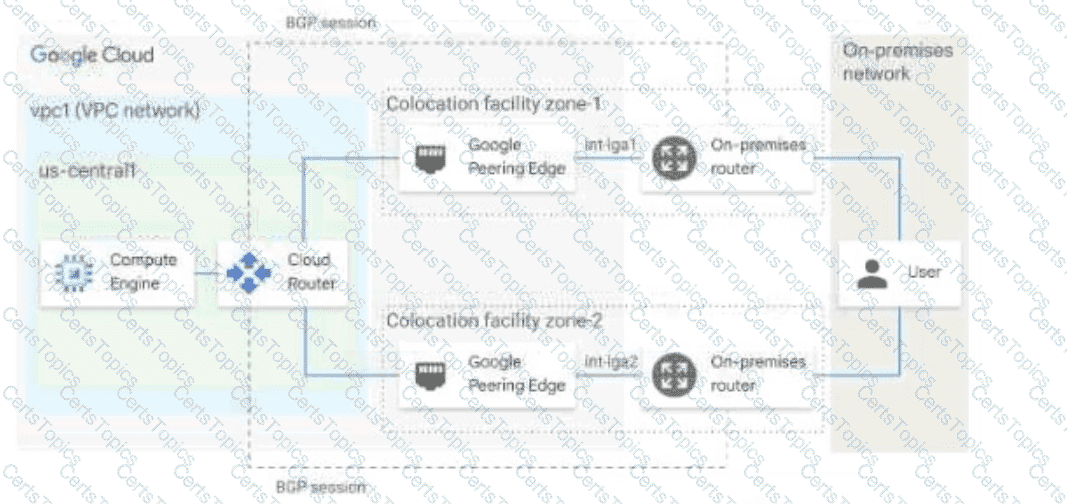Your organization is running out of private IPv4 IP addresses. You need to create a new design pattern to reduce IP usage in your Google Kubernetes Engine clusters. Each new GKE cluster should have a unique /24 range of routable RFC1918 IP addresses. What should you do?
You are configuring a new application that will be exposed behind an external load balancer with both IPv4 and IPv6 addresses and support TCP pass-through on port 443. You will have backends in two regions: us-west1 and us-east1. You want to serve the content with the lowest possible latency while ensuring high availability and autoscaling. Which configuration should you use?
You have the networking configuration shown in the diagram. A pair of redundant Dedicated Interconnect connections (int-Igal and int-Iga2) terminate on the same Cloud Router. The Interconnect connections terminate on two separate on-premises routers. You are advertising the same prefixes from the Border Gateway Protocol (BGP) sessions associated with the Dedicated Interconnect connections. You need to configure one connection as Active for both ingress and egress traffic. If the active Interconnect connection fails, you want the passive Interconnect connection to automatically begin routing all traffic Which two actions should you take to meet this requirement? (Choose Two)

Your company has separate Virtual Private Cloud (VPC) networks in a single region for two departments: Sales and Finance. The Sales department's VPC network already has connectivity to on-premises locations using HA VPN, and you have confirmed that the subnet ranges do not overlap. You plan to peer both VPC networks to use the same HA tunnels for on-premises connectivity, while providing internet connectivity for the Google Cloud workloads through Cloud NAT. Internet access from the on-premises locations should not flow through Google Cloud. You need to propagate all routes between the Finance department and on-premises locations. What should you do?